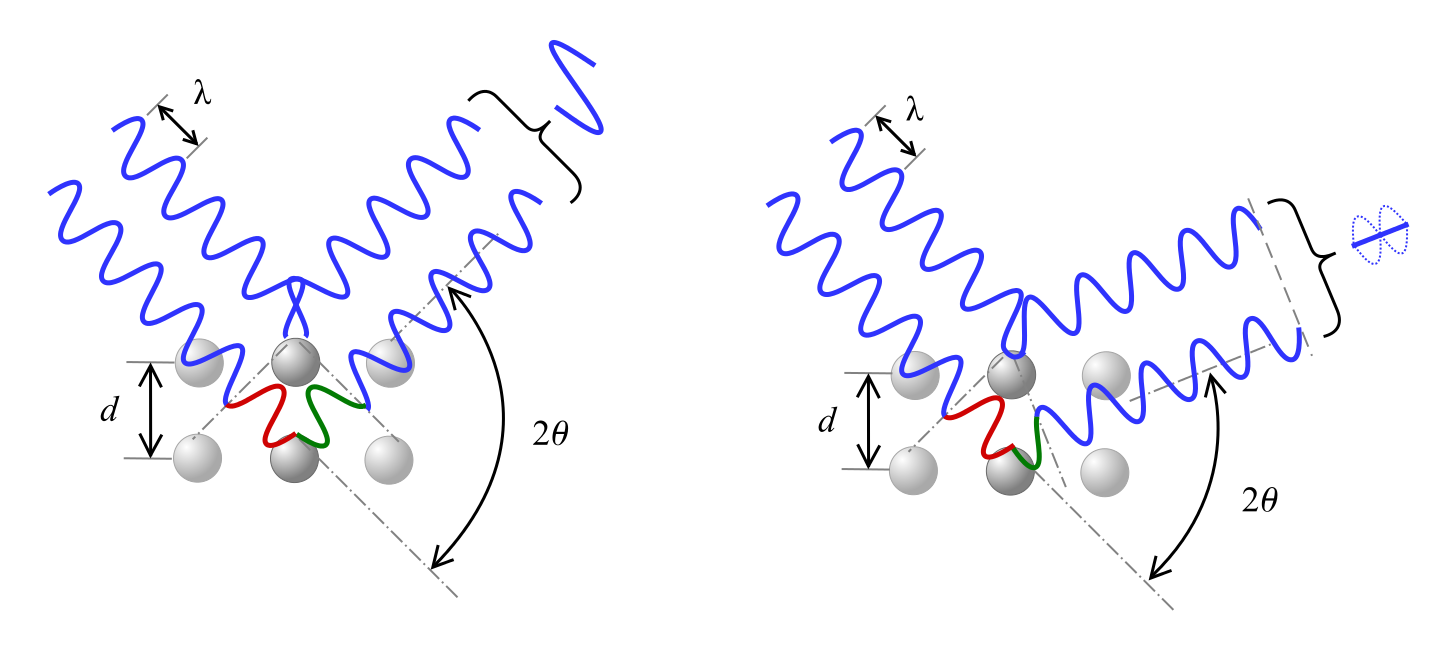

Bragg, the English physicists who explained this phenomenon. This relation is known as the Bragg equation in honor of W. This condition is satisfied when the angle of the diffracted beam, θ, is related to the wavelength and interatomic distance by the equation: nλ = 2 d sin θ. When X-rays of a certain wavelength, λ, are scattered by atoms in adjacent crystal planes separated by a distance, d, they may undergo constructive interference when the difference between the distances traveled by the two waves prior to their combination is an integer factor, n, of the wavelength. When scattered waves traveling in the same direction encounter one another, they undergo interference, a process by which the waves combine to yield either an increase or a decrease in amplitude (intensity) depending upon the extent to which the combining waves’ maxima are separated. When a beam of monochromatic X-rays strikes a crystal, its rays are scattered in all directions by the atoms within the crystal. X-rays are electromagnetic radiation with wavelengths about as long as the distance between neighboring atoms in crystals (on the order of a few angstroms). The size of the unit cell and the arrangement of atoms in a crystal may be determined from measurements of the diffraction of X-rays by the crystal, termed X-ray crystallography.ĭiffraction is the change in the direction of travel experienced by an electromagnetic wave when it encounters a physical barrier whose dimensions are comparable to those of the wavelength of the light. Modern instruments collect diffraction patterns from many different orientations and use the patterns and spot intensities to identify the crystal structure that is most likely to produce the observed combination of results.
#Xray diffraction equations series#
Ultimately, the lattice parameters can be derived from this information via a series of calculations. This relationship provides information about the underlying highly ordered arrangement of the atoms in the crystal. The relationship between the angle of diffraction, the interplanar spacing, and the X-ray wavelength is expressed with Bragg’s equation. This results in the pattern of regularly spaced spots of diffracted waves observed by the Braggs, where each spot represents a diffraction angle resulting in constructive interference. If the path difference is an integer multiple of the wavelength of the X-rays, then the X-rays constructively interfere. This is because the paths that the X-rays take from the source to the detector have different lengths. This depends on the interplanar spacing, d, and the angle at which the X-rays struck the atoms, or the incidence angle, theta. When X-rays diffract from atoms in different planes, the diffracted waves may or may not be in phase. X-rays are diffracted by the electrons of atoms if the atoms are regularly spaced and the X-ray wavelength is similar to the interatomic distance. This produces interference patterns, or diffraction patterns, showing the varying intensity of the diffracted waves at different points in space.

Recall that diffracted electromagnetic waves undergo constructive and destructive interference.

This led to the development of X-ray crystallography, which uses this phenomenon to determine the structures of crystalline solids ranging from simple ionic compounds to complex macromolecules like nucleic acids and proteins. In 1913, the father and son scientists William Henry Bragg and William Lawrence Bragg noticed that when X-rays strike a crystalline solid at a certain angle, the X-rays diffract and produce a pattern of regularly spaced spots.


 0 kommentar(er)
0 kommentar(er)
